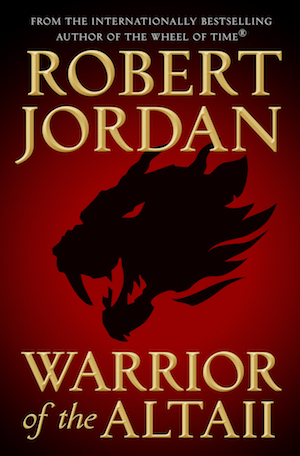As evidenced by our previous discussion, it’s easy to ask “more please” when the author in question is still alive. The desire for new books and stories becomes far more frustrating when author existence failure is the primary obstacle.
Stephen Robinett, for example, first published under the regrettable pen name Tak Hallus. Over the course of about a decade he published enough short pieces to fill a collection (Projections,1979) as well as three science fiction novels: Mindwipe (1976), published as Steve Hahn, Stargate (1976), and The Man Responsible (1978). Robinett later published two mystery novels: Final Option (1990) and Unfinished Business (1990). After that, silence. Over the years, I wondered on and off what ever became of him. An obituary cleared up the mystery: sadly, he’d died in 2004. Ah well. I’ve not read Mindwipe (because it was from Laser Books; do I need to explain that? Editor: yes you do ) but his short work was top-shelf and his novels were always engaging.
Still, even an author’s demise doesn’t always rule out the possibility of new works, or at least new editions of works previously overlooked or rescued from obscurity. As the following authors show, death is not, necessarily, the end of the story…
Robert Stallman’s career as a published fantasist ended just as it was beginning. He lived long enough to see 1980’s The Orphan hit print. The concluding two volumes of the science fiction/horror Book of the Beast trilogy, 1981’s The Captive, and 1982’s The Beast, were published posthumously. The Book of the Beast is rough in places but promising; sadly, Stallman was denied the opportunity to write more books.
Janet Kagan wrote two novels: the science fiction mystery Hellspark (1991) (which has many devoted and voluble fans) and the Star Trek novel Uhura’s Song (1985). She also published Mirable (1991), which is a collection that verges on a fix-up: the stories are glued together with new interstitial material. Reference sources slot this as a collection.
Kagan died in 2008. But aha! The comparatively recent The Collected Kagan (2016) collects twenty of her stories. As far as I know none are original to the collection, but if you’ve only read her novels and fix-ups, the material may be new to you.
Tom Reamy’s work includes one novel, Blind Voices (1977; published posthumously), and enough short material to fill a collection. Specifically, the collection San Diego Lightfoot Sue and Other Stories (1979), which contains the majority of the stories Reamy ever published. Although his professional career was short and his body of work small, his dark horror often placed well in the Locus awards and earned him two Nebula nominations, two Hugo nominations, a BSFA nomination, and a Balrog nomination—as well as a Nebula for Best Novelette, a Balrog for Best Novel, and a Campbell for Best New Writer. If you’ve not heard of him, it’s likely because he died aged only forty-two, way back in 1977.
Buy the Book


Warrior of the Altaii
In Reamy’s case, there is at least one unpublished story yet to be revealed. Reamy’s novella Potiphee, Petey and Me was purchased for Harlan Ellison’s The Last Dangerous Visions, the unpublished finale to Ellison’s Dangerous Visions series.
It should perhaps be added that Reamy was a well-known and well-liked SMOF.
Octavia E. Butler is the odd one out in this piece: she published a lot. Over the course of her three-decade career she wrote a dozen novels, which tended to fall into series:
- the Patternist novels (in which mutants and other changelings struggle to determine humanity’s future): Patternmaster (1976), Mind of My Mind (1977), Survivor (1978), Wild Seed (1980), and Clay’s Ark (1984). (Incidentally, Wild Seed is now being adapted into a television series, to be written by Nnedi Okorafor and Wanuri Kahiu.)
- the Xenogenesis Trilogy: Dawn (1987), Adulthood Rites (1988), and Imago (1989).
- the Parable of the Sower duology: Parable of the Sower (1993) and Parable of the Talents (1998).
…as well as two standalone novels, the horrifying Kindred (1979) (which I wish more time travel romance authors would read) and the vampire novel Fledgling (2005). Not to mention the collection Bloodchild and Other Stories (1995).
It’s a respectable body of work, but her death was premature and she might have so much written more. Fortune smiled, however: the 2014 Unexpected Stories released two previously unpublished stories.
When I say “fortune smiled,” what I mean is that two of Butler stories slated for Last Dangerous Visions were finally withdrawn and published. LDV is something of a potential goldmine of material (The table of contents is here.). Enough time has passed since Ellison accrued the material that many of the authors have passed away—as has Ellison himelf. All that’s between the stories trapped in LDV’s contract hell and actual publication are suitably determined estates. (Side note: in an alternate timeline accessed by Jo Walton, Ellison’s LDV was published.)
So let’s not despair: A lost Heinlein emerged a generation after his death, while Jules Verne’s Paris in the Twentieth Century first saw print nearly nine decades after its author’s passing. Who can say what treasures are hidden away in drawers or archives, or lurking in poorly labelled folders on hard drives? There is always reason to hope.
In the words of Wikipedia editor TexasAndroid, prolific book reviewer and perennial Darwin Award nominee James Davis Nicoll is of “questionable notability.” His work has appeared in Publishers Weekly and Romantic Times as well as on his own websites, James Nicoll Reviews and Young People Read Old SFF (where he is assisted by editor Karen Lofstrom and web person Adrienne L. Travis). He is surprisingly flammable.










